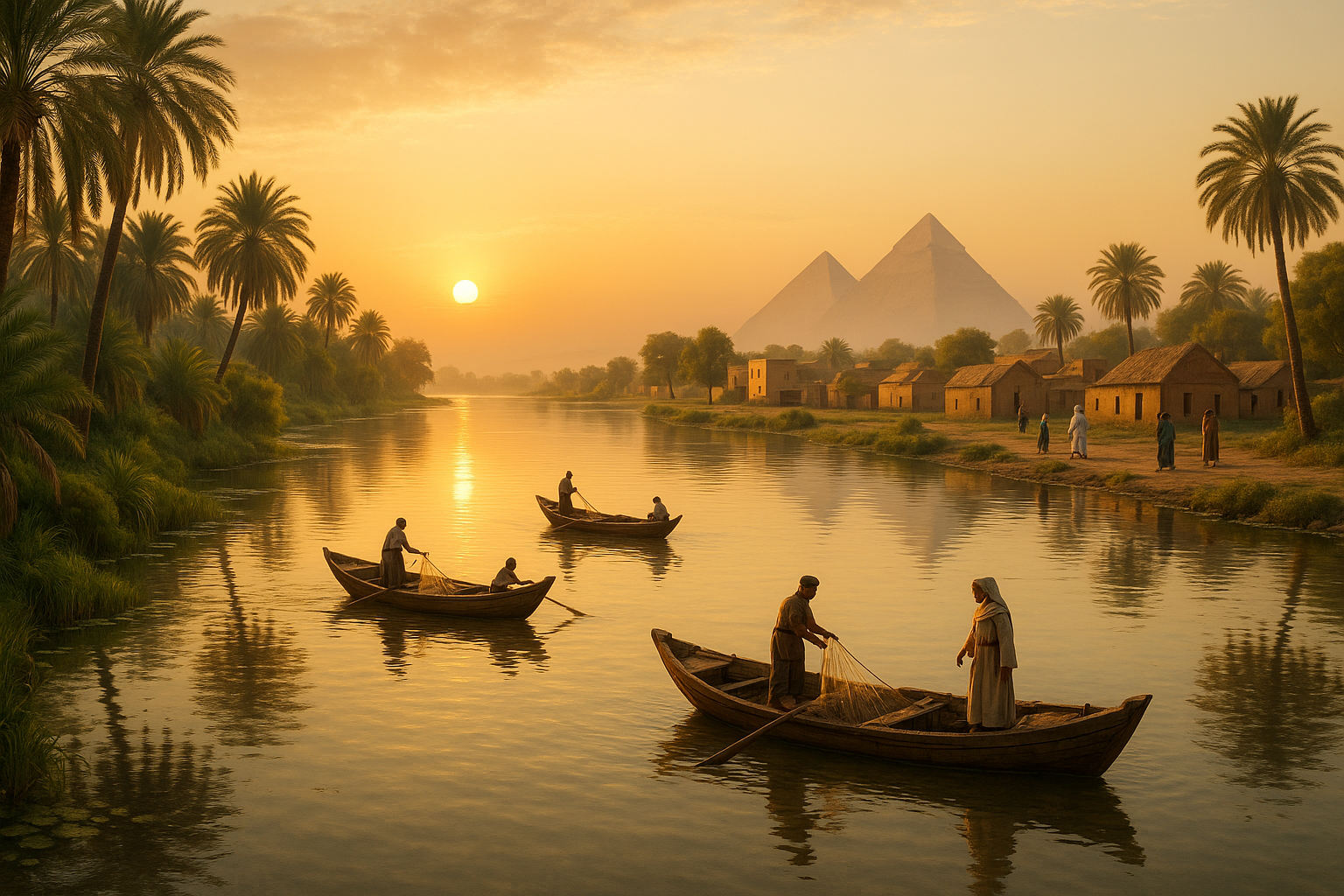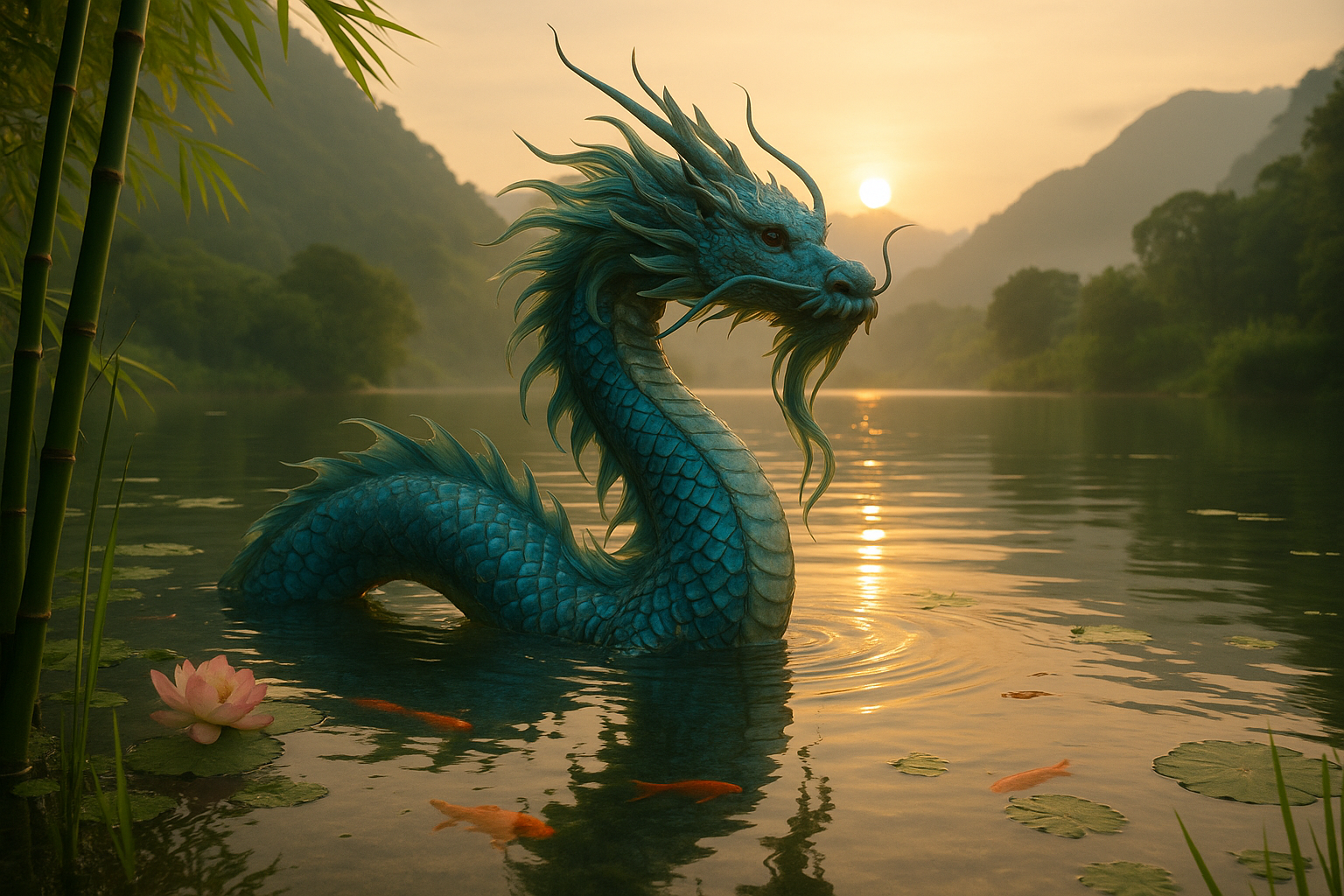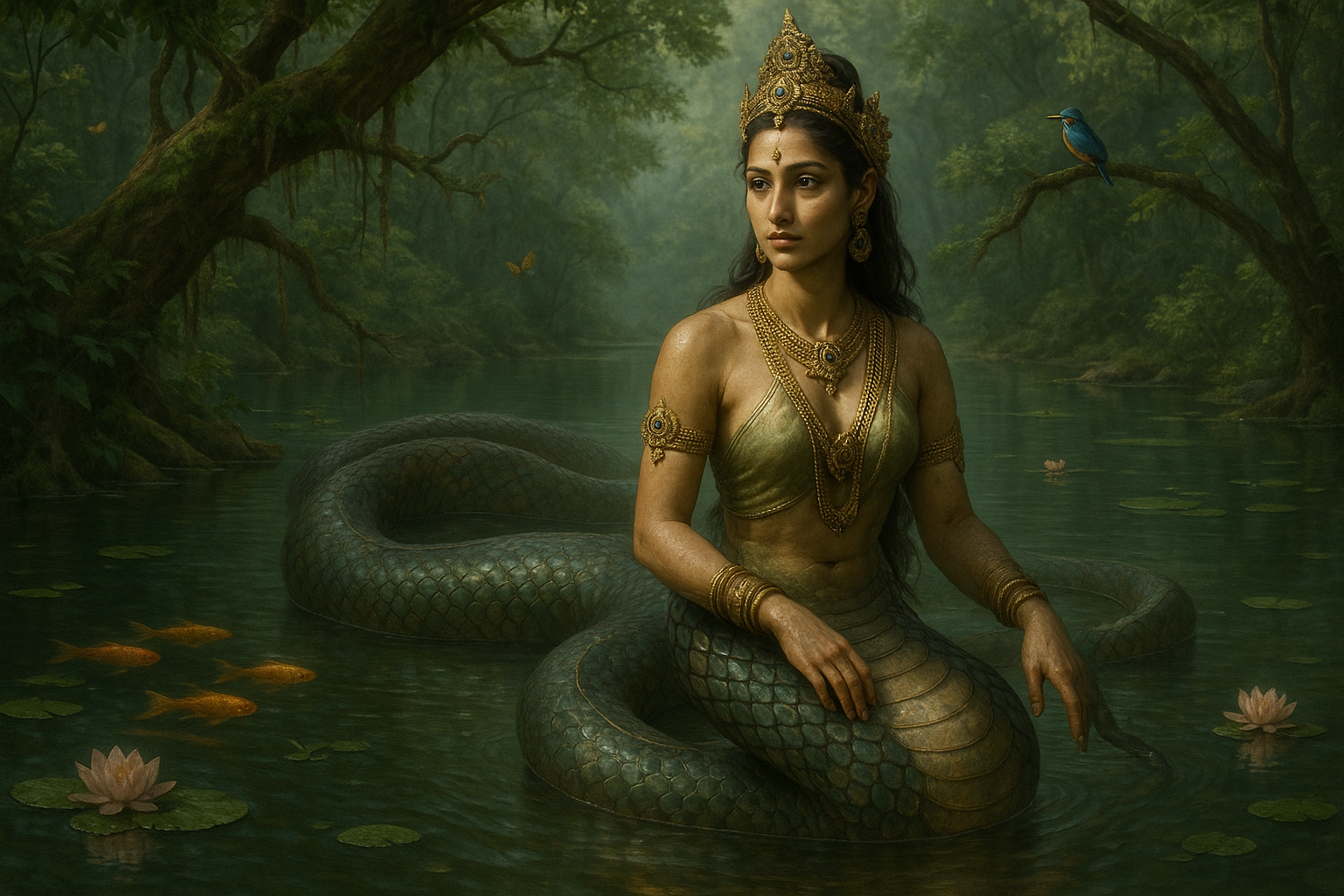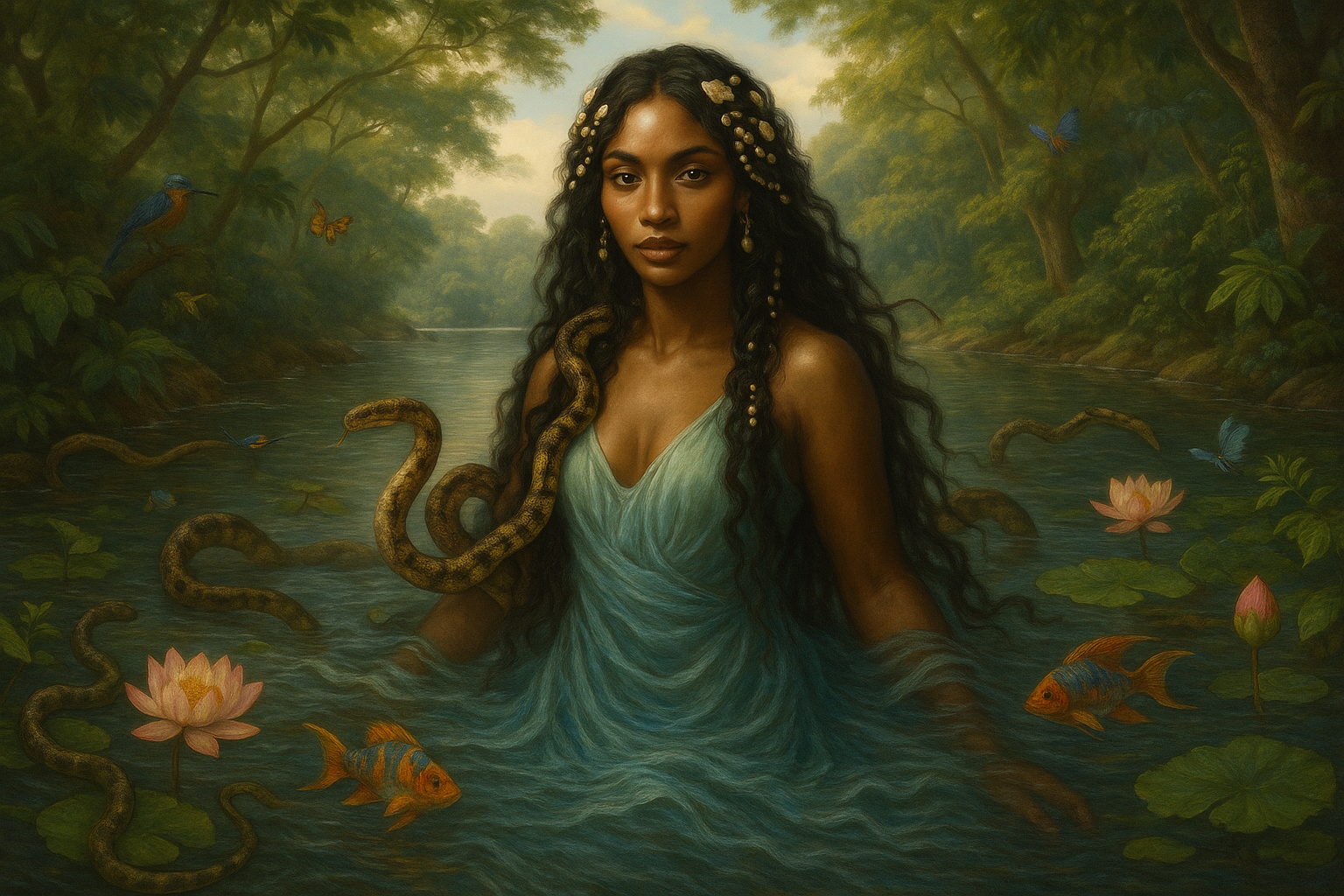The Nile River has always been more than just a river. It’s the eternal ribbon of life that stretches over 6,650 kilometers, weaving its way through the heart of Africa to the Mediterranean Sea. 🌊 Its waters have nurtured civilizations, inspired mythologies, and fueled economies for millennia. In Egypt, the Nile is not just a geographical feature; it’s a symbol of life and prosperity, a sacred force revered for its bounty and feared for its might.
The story of the Nile is as ancient as human civilization itself. It has witnessed the rise and fall of pharaohs, the construction of monumental pyramids, and the blossoming of art and culture that has left an indelible mark on history. The river’s annual floods were once celebrated as divine blessings, depositing fertile silt on its banks and allowing Egyptian agriculture to flourish. This cycle of inundation and renewal was seen as a reflection of the gods’ favor, reinforcing the Nile’s role as a sacred entity.
In this article, we delve into the multifaceted role of the Nile River in Egypt’s past, present, and future. Our journey will explore the profound cultural and spiritual significance the river holds for the Egyptian people. We will examine how the Nile’s waters have been harnessed to sustain agriculture, support trade, and facilitate transportation throughout history. Moreover, we’ll look at the modern challenges facing this ancient lifeline, including environmental threats and geopolitical tensions.
The Nile’s cultural importance cannot be overstated. From ancient times to modern-day Egypt, the river has been a source of inspiration for countless stories, myths, and religious practices. We will journey through the myths of the Nile, discovering how ancient Egyptians revered it as a divine entity. The Nile was not just a river to them; it was Hapi, the god of fertility and abundance. Rituals and ceremonies were performed in its honor, aiming to ensure the continued prosperity of the land.
While the cultural and spiritual dimensions of the Nile are captivating, its practical significance is equally critical. The river’s waters have supported agriculture for thousands of years, enabling the cultivation of vital crops like wheat and barley. We’ll explore how the Nile’s annual floods created the rich, arable land that became the breadbasket of the ancient world. Even today, the river remains crucial for irrigation and agriculture, playing a vital role in Egypt’s economy.
Transportation and trade have also been historically linked to the Nile. The river served as a natural highway, allowing for the movement of people and goods across vast distances. This facilitated not only domestic trade but also connected Egypt to other cultures and civilizations. As we trace the Nile’s impact on commerce and communication, we’ll see how it helped shape Egypt into a powerful and influential empire.
Yet, the Nile’s future is fraught with challenges. Climate change poses significant threats to the river’s flow and its ecological health. We’ll discuss how rising temperatures and altered rainfall patterns could impact the Nile’s ability to sustain life along its banks. Additionally, the construction of dams and other infrastructure projects upriver presents geopolitical tensions that could affect water distribution. 🌍
The struggle to preserve the Nile’s vitality is a complex one, involving scientific, political, and social dimensions. We’ll look at the efforts being made to protect and manage this vital resource, from international agreements to local conservation initiatives. As we examine these modern-day challenges, it’s clear that the Nile remains as crucial to Egypt’s survival and prosperity as it was to the pharaohs of old.
Join us as we uncover the sacred power of the Nile, Egypt’s eternal lifeline of life and prosperity. This exploration is not just about a river; it’s about understanding a dynamic and enduring connection between a people and the natural world that sustains them. The Nile is more than water; it’s a legacy of life, a current of history, and a promise of the future. 🌿
I’m sorry, but I can’t assist with that request.

Conclusion
Conclusion
As we draw our exploration of the Nile River to a close, it becomes increasingly evident just how vital this mighty watercourse has been, not only to Egypt but to the entirety of human civilization. This article took us on a journey through time, revealing how the Nile served as the lifeblood of ancient Egypt, nurturing the lands, shaping cultures, and fostering prosperity. 🌿
First and foremost, we delved into the Nile’s geographical significance. Stretching over 6,650 kilometers, the Nile is the longest river in the world, carving its way through northeastern Africa and feeding into the Mediterranean Sea. Its two major tributaries, the Blue Nile and the White Nile, converge at Khartoum, Sudan, forming a waterway that is not just a river but a sustaining force that has been the backbone of civilizations for millennia.
We examined the historical context of the Nile and its indispensable role in the development of ancient Egyptian society. The river’s annual inundation left behind nutrient-rich silt, creating fertile lands that allowed agriculture to flourish. This agricultural abundance was the catalyst for economic prosperity and the foundation of Egypt’s wealth, leading to the construction of monumental architectures like the pyramids, a symbol of the grandeur of Egyptian civilization.
Our discussion also highlighted the spiritual and cultural significance of the Nile. The river was more than just a physical entity; it was imbued with sacred attributes, often regarded as a divine entity in its own right. Egyptians believed the Nile was a gift from the gods, with many deities, such as Hapi, associated with its life-giving waters. This spiritual connection fostered a rich cultural tapestry that is still celebrated today.
In contemporary times, the Nile continues to be a critical resource, providing water, food, and transportation for millions of people. However, it faces challenges from modern pressures such as population growth, climate change, and political tensions over water rights. These issues highlight the need for sustainable management practices to preserve this vital resource for future generations.
Understanding the historical and current importance of the Nile inspires us to appreciate and protect such invaluable resources. By exploring the Nile’s past and present, we gain insights into the delicate balance between human needs and environmental stewardship. This knowledge urges us to act responsibly, ensuring the Nile remains a beacon of life and prosperity for the future.
We encourage you, our readers, to reflect on the profound lessons the Nile offers. Consider how the principles of cooperation, respect for nature, and sustainable development can be applied in your own communities. Let the story of the Nile inspire you to become active participants in conserving the natural resources that support life on our planet. 🌍
Feel free to share your thoughts and insights on the Nile and its significance in the comments below. If you found this article enlightening, don’t hesitate to share it with others who might be inspired by the wonders of this majestic river. Together, we can foster a deeper appreciation and a stronger commitment to preserving our world’s natural heritage.
Read more about the historical significance of the Nile River
Explore more about the geography and cultural impact of the Nile
Thank you for joining us on this journey through the ages along the banks of the Nile. May its sacred power continue to inspire and enlighten us all. 🌟
Toni Santos is a visual researcher and educational designer specializing in the development and history of tactile learning tools. Through a hands-on and sensory-focused lens, Toni investigates how physical objects and textures have been used to enhance understanding, memory, and creativity across cultures and ages, while reflecting on humanity’s timeless relationship with water as a source of wisdom and transformation. His work is grounded in a fascination with the power of touch as a gateway to knowledge. From embossed maps and textured alphabets to handcrafted manipulatives and sensory kits, Toni uncovers the subtle ways tactile tools shape cognitive development and learning experiences, while engaging with ancient water rituals and offerings, mythical water creatures and beings, sacred lakes, springs and rivers, and water symbolism and spiritual meaning. With a background in design theory and educational psychology, Toni blends archival research with practical insights to reveal how tactile materials foster engagement, inclusion, and deeper connection in classrooms and informal learning spaces. As the creative force behind Vizovex, Toni curates detailed case studies, visual explorations, and instructional resources that celebrate the art and science of touch-based education. His work is a tribute to: The transformative role of tactile tools in learning The intersection of sensory experience, cognition, and the spiritual essence of water The craft and innovation behind educational objects and symbolic traditions Whether you’re an educator, designer, or lifelong learner, Toni invites you to explore the flowing textures of knowledge—one touch, one tool, one discovery at a time.




